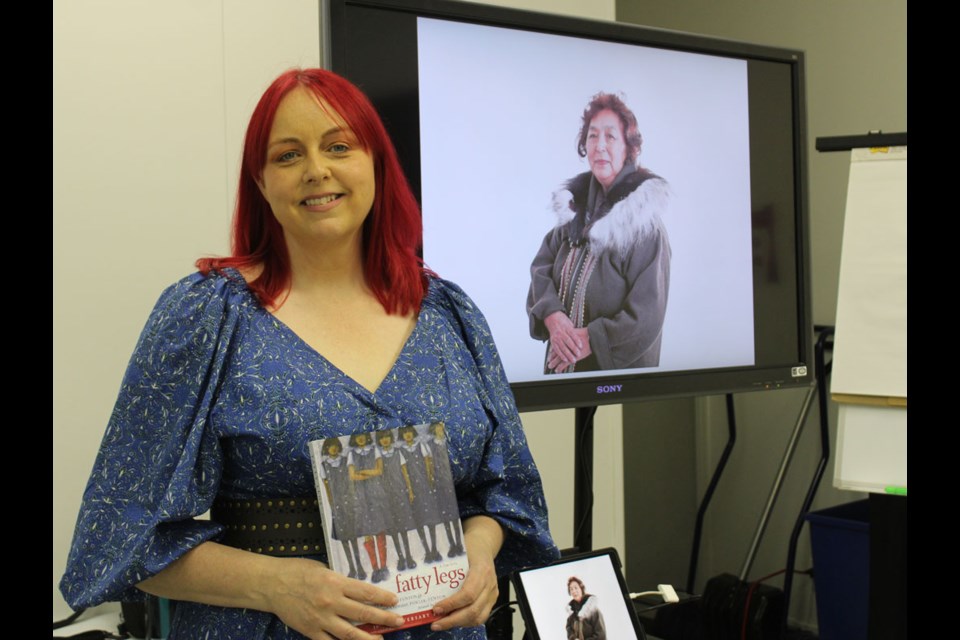That girl was Margaret-Pokiak Fenton, a member of the Inuvialuit people, the Inuit living in the western-most part of the Arctic. With her daughter in-law Christy Jordan-Fenton, Margaret co-authored a series of books about her time at residential school.
Last week, Jordan-Fenton held a talk about Margaret as a part of a continuing series on what it means to be Indigenous titled Dialogues for Reconciliation-Action. The talks are both a glimpse into Margaret’s life and a history lesson on the lingering impacts of colonization.
“When Margaret began telling me her story, I realized it was my chance to finally start answering some questions. She was openly talking about certain things and I was able to find out a lot more, and this began us going on a healing journey together,” said Jordan-Fenton, who’s Cree-Metis stepfather also attended residential school.
Attendees of the talk were encouraged participate in Project of the Heart, decorating tiles for an Indigenous art mosaic wall at the Cultural Learning and Innovation Circle building in Fort St. John. Jordan-Fenton says it’s important to recognize how Canada planted itself on top of pre-existing nations and cultures, the Indigenous people who had lived on the North American continent for thousands of years.
“The country of Canada came to [Margaret’s] country and set itself on top. And it set itself on top of the country of the Cree, the Dane-zaa, the Carrier, the Saulteau, the Anishinaabe and all the peoples,” said Jordan-Fenton.
Severing Indigenous people’s connection to the land was the original goal of residential schools, with Margaret leaving at eight years old in the hopes of learning English.
“The original residential schools were called industrial schools – they taught them to do jobs nobody else wants to do. So, that was sewing in sweatshops, building furniture for factories,” said Jordan-Fenton.
Despite how incredibly strong-willed Margaret was, Jordan-Fenton said her mother in-law didn’t leave residential school unscathed, struggling to speak her traditional language in addition to being physically and spiritually malnourished.
Further books were authored by the two, including Stranger At Home, When I Was Eight, and Not My Girl, explaining Margaret’s experience reintegrating into her family and heritage. Jordan-Fenton said her mother in-law remained an unstoppable advocate for Indigenous people up until her passing last April.
The two toured both Canada and internationally over the past decade, explaining the devastating legacy of residential schools to younger generations.
Tom Summer, Alaska Highway News, Local Journalism Initiative.
Have a story or opinion? Email Tom at [email protected]


